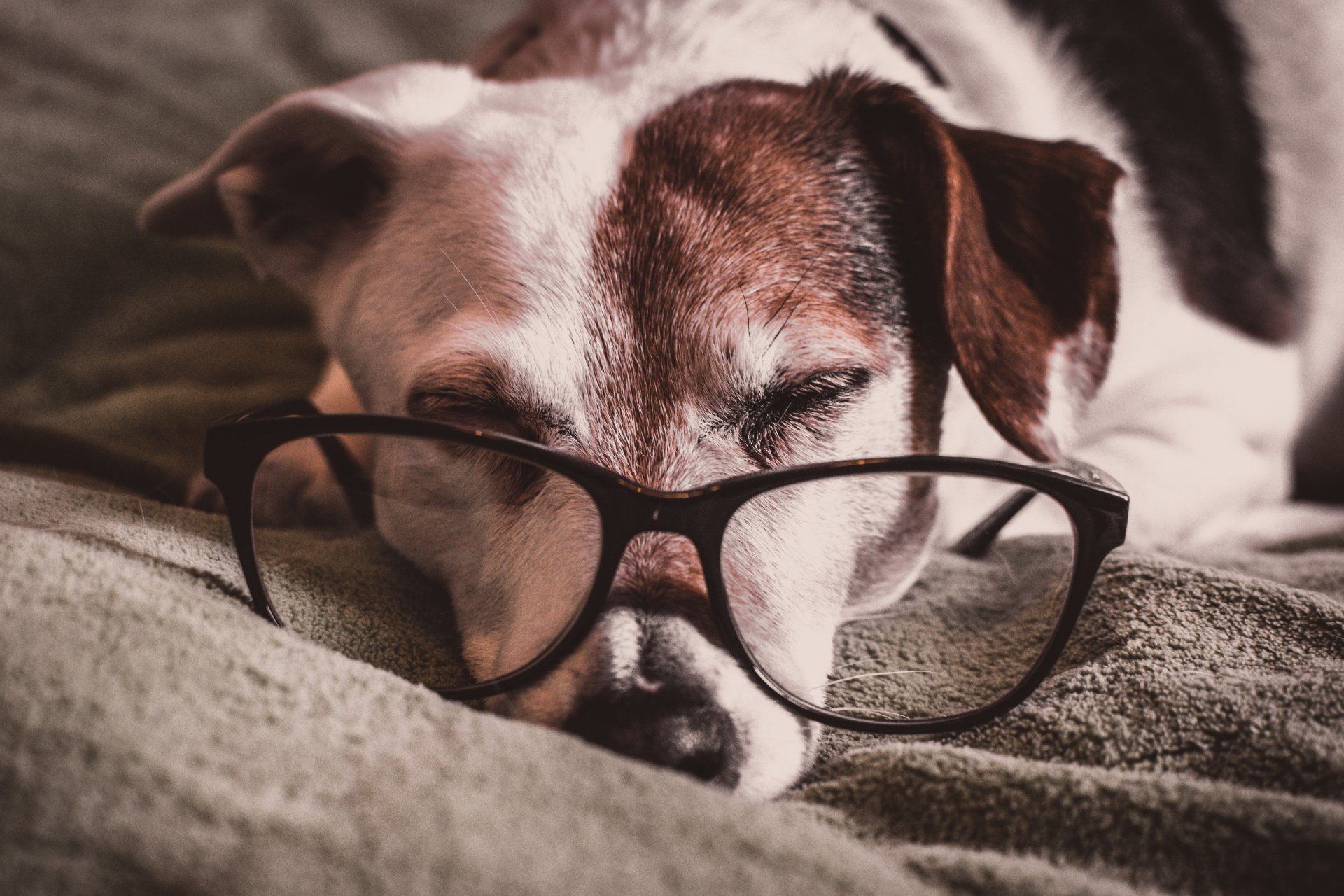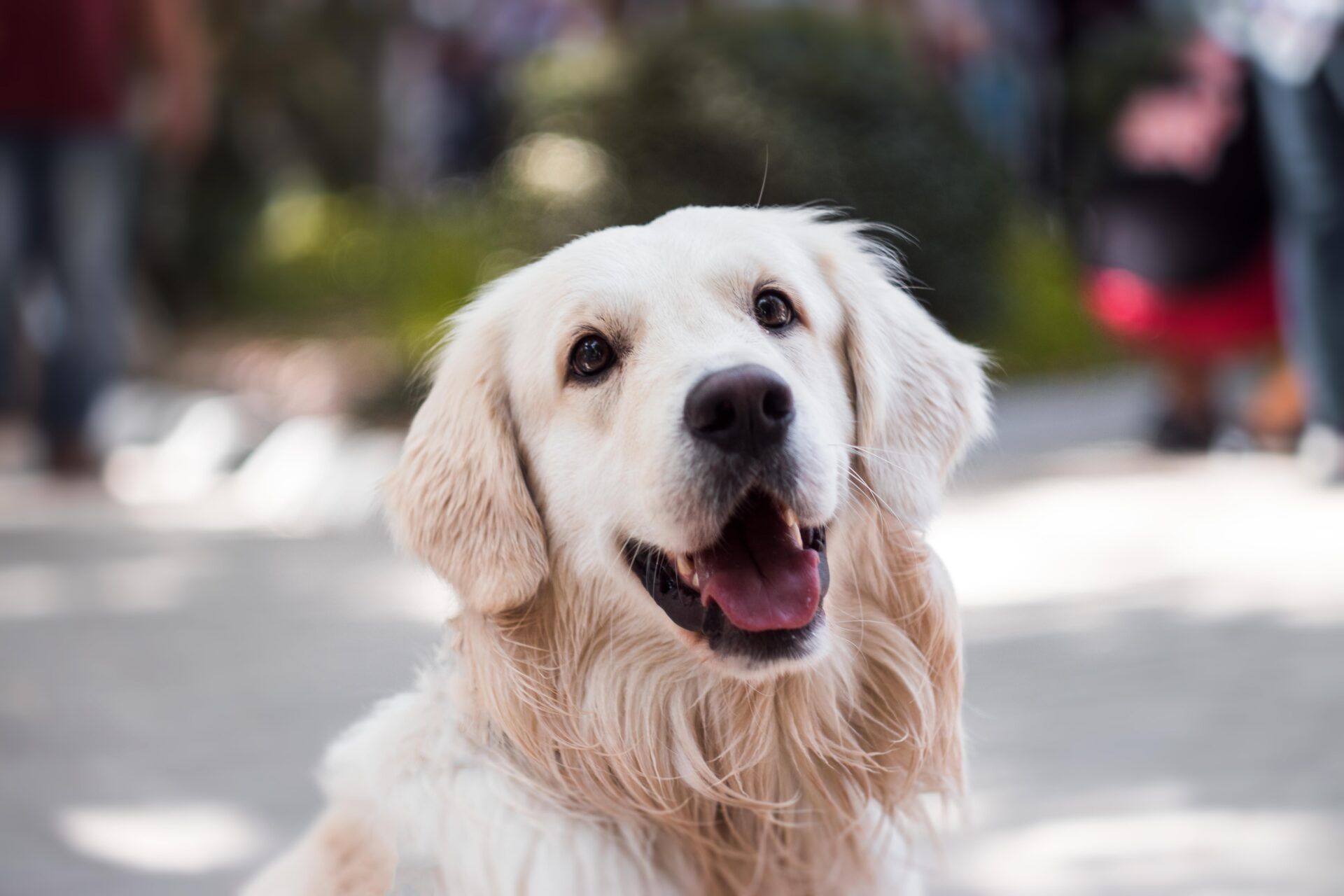All About Paws, LLC | 1685-B Garbers Church Road | Harrisonburg, Virginia 22801
Blog Layout
The Importance of Trimming Your Dog's Nails
allaboutpaws2014 • Apr 08, 2024
The body content of your post goes here. To edit this text, click on it and delete this default text and start typing your own or paste your own from a different source.
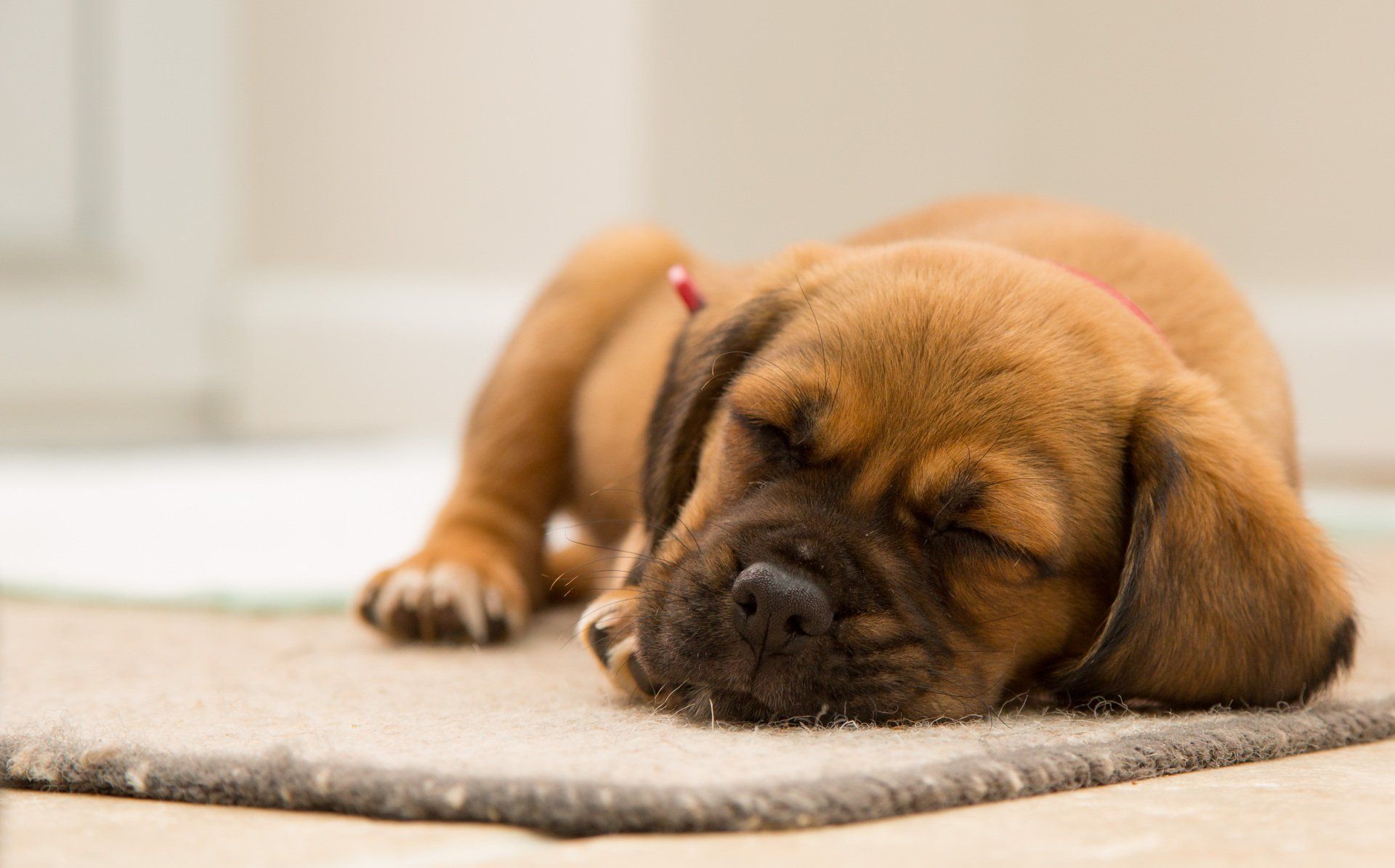
29 Apr, 2024
You may love cuddling with your furry friend all snuggled up in your bed, but if it is negatively affecting your sleep at night, it may be time to change your pet’s sleeping habits. While it will be a hard transition moving your pet from your bed to their own bed, it will benefit everyone in the long run. Here are a few tips on how to get started. For Dogs: Find the right bed Finding a bed for your dog that is comfortable and appealing to them will make the transition much easier. Make sure that the sizing is correct and will allow them to sleep their best. You should also greatly consider the materials, and how easily it can be washed. Teach new commands One thing that will be extremely beneficial when teaching your pup to sleep in their own bed is commands specifically related to their bed. Start teaching them “go to bed” or “bed” in relation to their own bed while walking them to it. Remain consistent with this training, and practice through the day, not just at bedtime. Use positive reinforcement, such as treats, when they obey the commands or chose their bed over yours. For Cats: Find the right bed Just like with dogs, finding the right bed for your cat is very important. Depending on your cat’s temperament, you may want to opt for a bed with overhead covering. Because cats knead and claw, make sure that you choose a bed that is durable against cat nails. Location is key Place your cat’s new bed somewhere they will feel safe and warm. They usually prefer being higher up, so consider placing their bed on top of something tall like a cat tree. Make your room undesirable Emphasize the fact that your cat cannot sleep in your room or bed by closing your door at night, so they are unable to get in. If you want to make even more of an drastic effort to keep your cat off, spray a strong scent such as citrus oils on and around your bed. Remember that this process may take time, so be patient. It will be worth the wait when everyone in your house is able to sleep soundly at night! Sources: https://www.cnet.com/health/sleep/4-ways-to-get-your-pet-to-sleep-in-their-own-bed
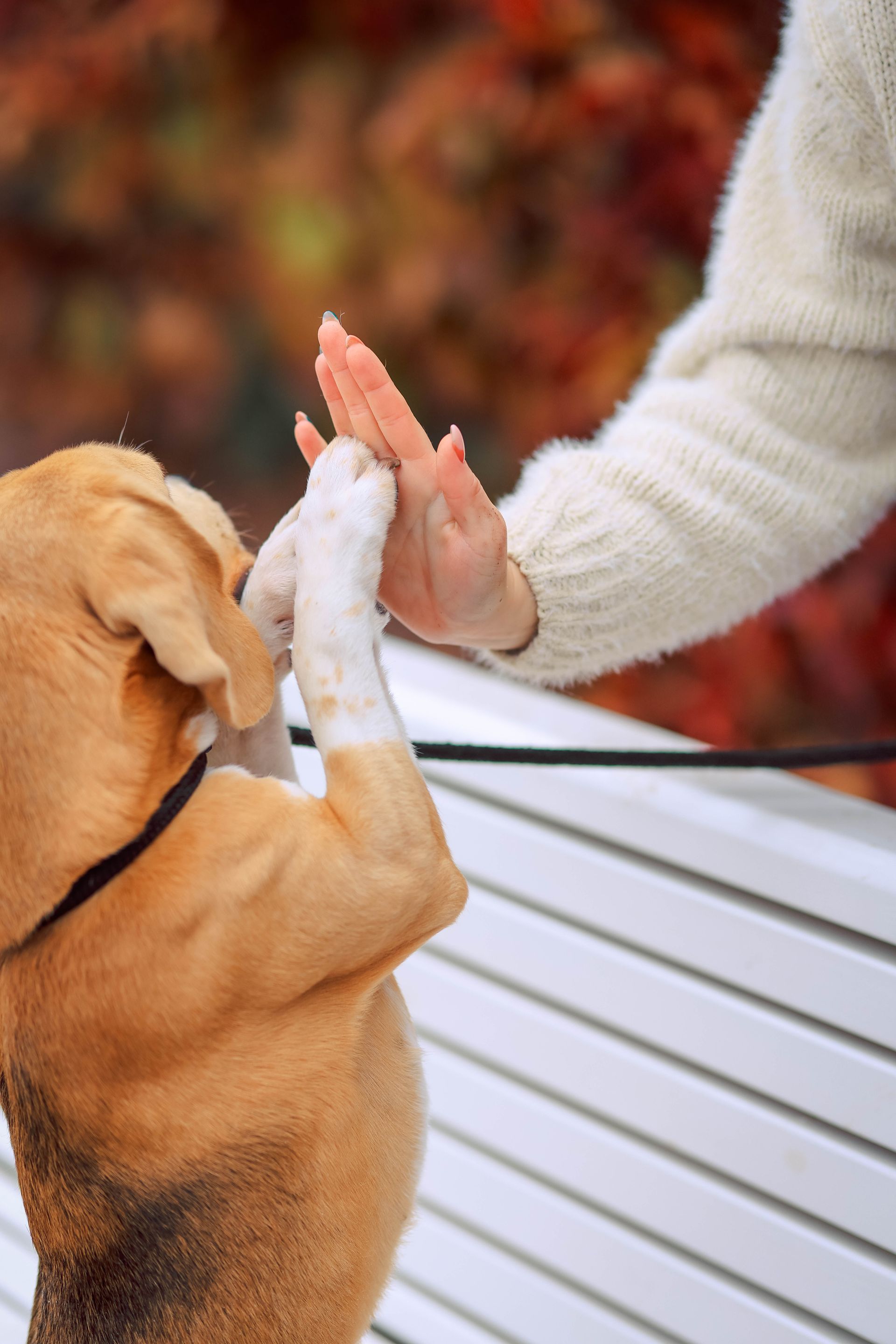
By allaboutpaws2014
•
29 Apr, 2024
Welcoming a new puppy into your home is an exciting adventure filled with cuddles, playtime, and boundless love. However, one of the first challenges many new puppy parents face is house training. Accidents are inevitable, but with patience, consistency, and positive reinforcement, you can successfully teach your furry friend where and when to do their business. Here's a handy guide to help you navigate the journey of house training your puppy. Establish a Routine: Consistency is key when it comes to house training. Set a regular schedule for feeding, potty breaks, and bedtime. Puppies typically need to relieve themselves shortly after eating, drinking, playing, or waking up from a nap. Take your puppy outside to the designated potty area frequently, at least every 1-2 hours during the day. Choose a Potty Spot: Designate a specific area outside where you want your puppy to go. Take them to this spot every time you go out, and wait patiently until they do their business. Using the same spot repeatedly will help your puppy recognize it as their designated area. Use Positive Reinforcement: When your puppy goes in the appropriate spot, shower them with praise, affection, and treats. Positive reinforcement helps encourage good behavior, which your puppy will repeat. Watch for Signs: Learn to recognize your puppy's signs that they need to go potty, such as sniffing, circling, or whining. When you notice these behaviors, promptly take them outside to their spot. Supervise and Confine: Keep a close eye on your puppy, especially during the initial stages of house training. Use baby gates or a crate to confine them to a small area when you can't supervise directly. This helps prevent accidents and gives you more control over their potty habits. Clean Accidents Thoroughly: Accidents are bound to happen, especially during the learning process. When accidents occur, clean them up promptly using an enzymatic cleaner to remove any lingering scent that might attract your puppy back to the same spot, and prevent any other animals from feeling the need to mark their territory. Be Patient and Consistent: Remember that house training takes time and patience. Every puppy learns at their own pace, so stay consistent with your training routine and be prepared for setbacks along the way. Stay positive and avoid punishment, as it can confuse and frighten your puppy. Adjust as Needed: As your puppy grows and develops, their potty needs may change. Be prepared to adjust your routine accordingly and continue reinforcing good habits. By following these tips and remaining patient and consistent, you can successfully house train your puppy and set them up for a lifetime of good potty habits. Enjoy the journey of bonding with your furry friend as you navigate this important milestone together. Sources: Potty Training a Puppy: How to House Train Puppies (akc.org) Tips on how to potty train your dog or puppy | The Humane Society of the United States
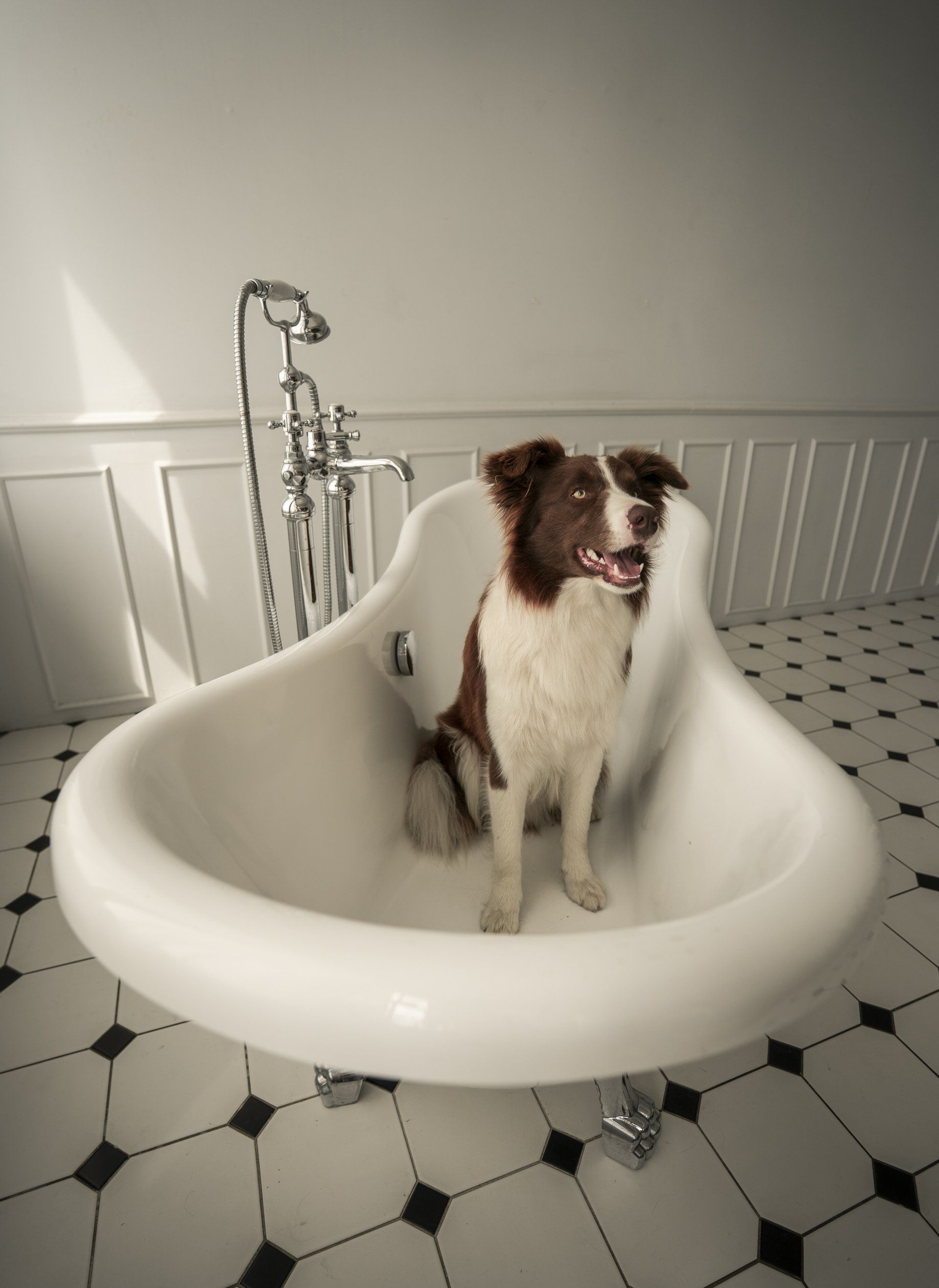
By allaboutpaws2014
•
29 Apr, 2024
Bathing your furry friend is an essential part of pet care, but how often should you grab a bottle of bubbles? While regular baths are important for keeping your dog clean and smelling fresh, overdoing it can strip their skin of natural oils and lead to dryness and irritation. Finding the right balance is key to maintaining your dog's hygiene without causing harm to their skin and coat. Here's a brief guide to help you determine how often to bathe your dog. Consider Your Dog's Breed and Coat Type: Different breeds and coat types have varying grooming needs. Dogs with short coats or those that spend a lot of time indoors may require less frequent baths, while dogs with long or dense coats may need more frequent grooming to prevent mats and tangles. Assess Your Dog's Lifestyle: Take into account your dog's lifestyle and activities. Dogs that spend a lot of time outdoors, rolling in dirt or swimming in ponds, may need more frequent baths to remove dirt, debris, and odors. On the other hand, dogs that lead a predominantly indoor lifestyle may require fewer baths. Follow Veterinarian Recommendations: Consult your veterinarian for guidance on how often to bathe your dog, especially if they have skin conditions or allergies. Your vet can provide personalized advice based on your dog's individual needs and health status. Use Your Senses: Trust your senses to determine when it's time for a bath. If your dog starts to develop a noticeable odor, looks visibly dirty, or their coat feels greasy or oily to the touch, it may be time for a bath. However, be cautious not to bathe your dog too frequently, as this can strip away their skin's natural oils and lead to dryness and irritation. Use a Gentle Shampoo: When bathing your dog, use a mild, veterinarian-approved shampoo formulated specifically for dogs. Avoid using human shampoos or harsh chemicals, as they can be too drying for your dog's skin. Do your research and find a high-quality brand that you can trust for your dog. Practice Proper Bathing Technique: When bathing your dog, use lukewarm water and thoroughly wet their coat before applying shampoo. Gently massage the shampoo into their fur, being careful to avoid their eyes and ears. Rinse thoroughly to remove all traces of shampoo, as leftover residue can cause skin irritation. Dry Thoroughly: After bathing, towel dry your dog thoroughly and allow them to air dry completely before brushing their coat. Make sure to dry their ears thoroughly to prevent moisture buildup, which can lead to ear infections. Remember, there's no one-size-fits-all answer to how often you should bathe your dog. Pay attention to your dog's individual needs, and adjust your grooming routine accordingly. With proper care and attention, you can keep your canine companion clean, healthy, and happy for years to come. Sources: How Often to Bathe a Dog: 56% of Pet Owners Don't Do It Enough - Veterinarians.org How Often Should You Bathe Your Dog? (Plus 8 Bathing Tips) (caninejournal.com )
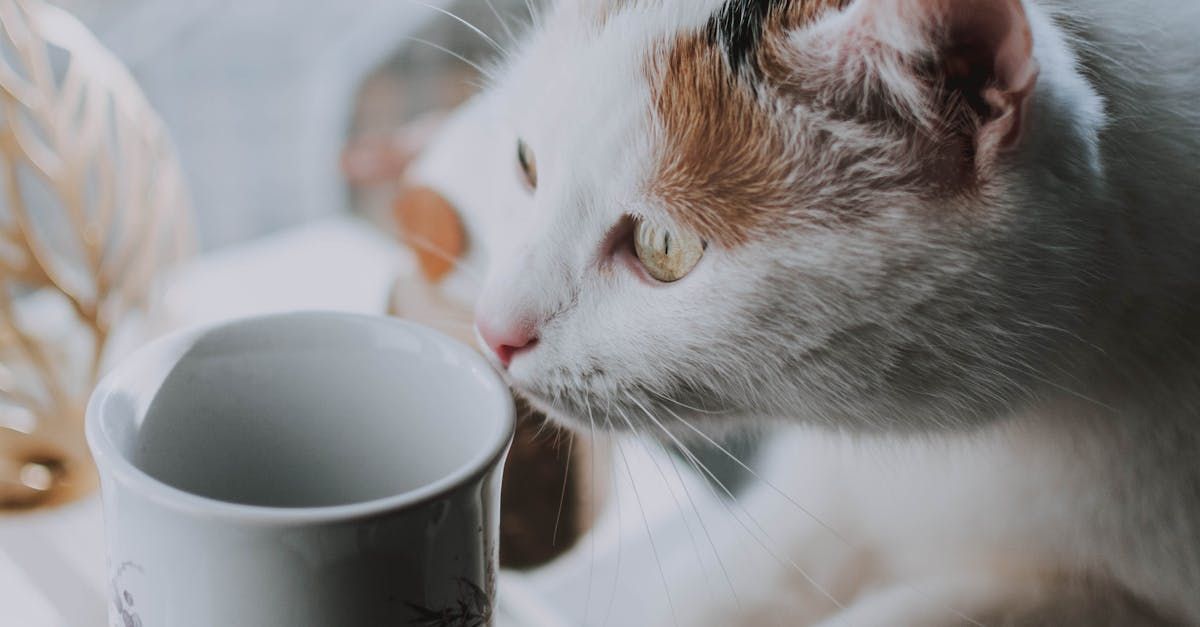
By allaboutpaws2014
•
08 Apr, 2024
As any cat owner knows, our feline friends can be notoriously picky about all kinds of habits, especially their water intake. While it might seem like a minor concern, ensuring that your cat stays properly hydrated is crucial for their overall health and well-being. So, how can you encourage your finicky feline to drink more water? Here are a few tips and tricks to help keep your cat hydrated and healthy: 1. Provide Fresh Water: Cats prefer to drink fresh, clean water. Make sure to change their water bowl daily and clean it regularly to prevent any buildup of bacteria, dust, or debris. This seems like a silly point to make, but taking the simple step to switch out water each day can have an effect on your cat’s interest in their water dish! 2. Consider the Bowl: Some cats are particular about the type of water bowl they drink from. Experiment with different materials, sizes, and shapes to see what your cat prefers. Some cats even enjoy drinking from running water, so investing in a cat fountain could be beneficial, so that you don’t need to keep your tap running all day! 3. Location, Location, Location: The placement of your cat's water bowl can make a difference. Ensure that water bowls are placed away from litter boxes and feeding areas, as cats instinctively avoid drinking water near their food or waste. 4. Try Different Water Sources: Cats may be more inclined to drink from certain sources over others. Consider offering filtered water or even low-sodium chicken or tuna broth as a treat to encourage hydration. 5. Wet Food Diet: Incorporating wet food into your cat's diet can increase their overall water intake, believe it or not! Wet food contains a higher moisture content than dry kibble, providing additional hydration. 6. Interactive Play: Engage your cat in interactive play sessions to stimulate their thirst. Running, jumping, and playing can make your cat feel more inclined to drink water afterward. 7. Regular Vet Check-Ups: Regular veterinary check-ups are essential for monitoring your cat's health, including their hydration levels. Your vet can provide valuable insights and recommendations tailored to your cat's specific needs. Remember, every cat is unique, so it may take some trial and error to find the right combination of methods to encourage your cat to drink more water. However, prioritizing hydration is essential for maintaining your cat's overall health and longevity. By implementing these tips and tricks, you can help ensure that your beloved feline friend stays happy, healthy, and well-hydrated for years to come. After all, a hydrated cat is a happy cat! Source: Tips and Tricks to Get Your Cat to Drink More Water – Clinical Nutrition Service at Cummings School (tufts.edu)
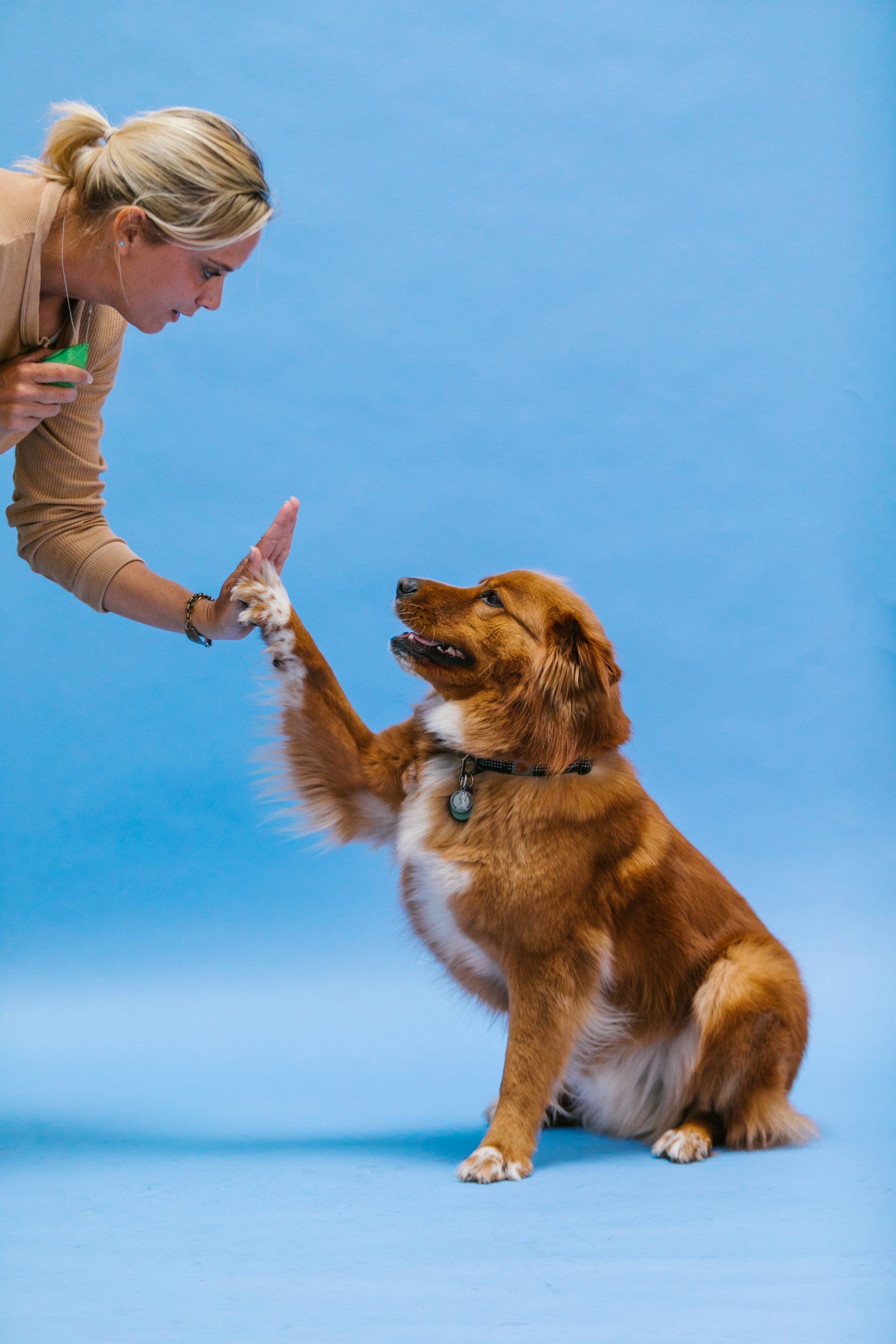
25 Mar, 2024
When you are training your dog to follow a simple command or to learn a new trick, the reward is key. There are so many types of commercial treats, as well as household food items, that are great options for training treats, so keep these factors in mind when choosing. Small treats When you are training, you are giving many treats to your dog in a very small amount of time. It is best to keep them very small, as your dog will still get the taste of their favorite snack without piling on the calories consumed. Small size treats will also allow you to keep moving along quickly in your training session, as your dog will not need to take much time to stop and eat between commands. Keep treats on hand. There may be times in your training process when you will want to reward good behavior as you see it throughout the day. When you are with your dog, keep a pocket filled with treats so you are able to reinforce the good behavior that you are seeing on the spot. This is a great way for your pup to really catch on to what you are expecting as far as daily behavior goes, and not just when you are focused on a training session. Variety. Just as you may become tired of eating one kind of food over and over, your dog may like a change up in their treats. If your dog seems distracted or uninterested in your training, you may want to switch to a favorite treat that will lock in their focus. You can also mix many together to keep your dog guessing what the next bite will be. Treats and rewards are the keys to success in any training process with your pup. It may take some trial and error on finding what your dog likes best, but once you do, you are set. Sources: https://www.akc.org/expert-advice/training/dog-training-treats
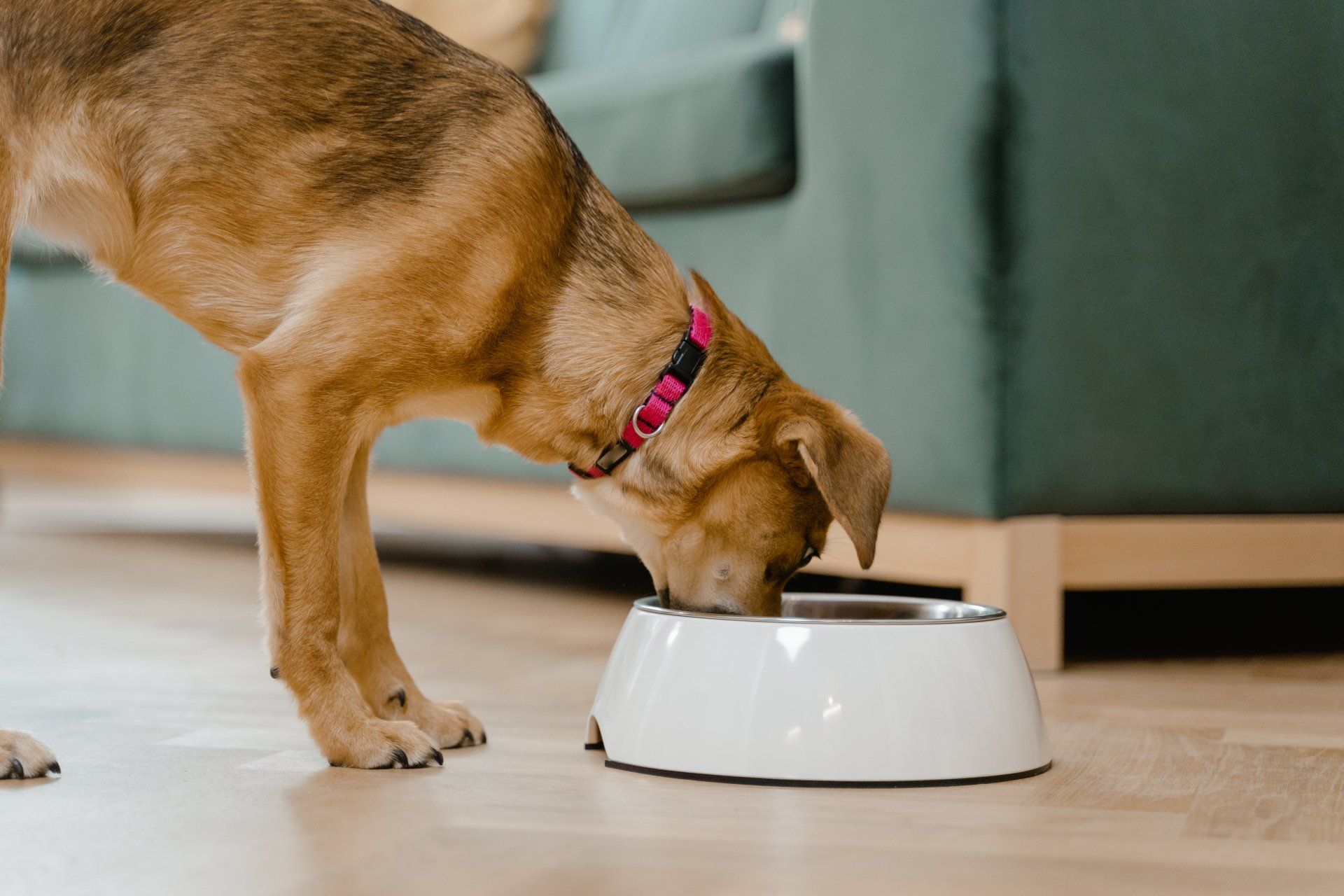
25 Mar, 2024
When is the last time that you collected your dog’s bowl along with your family’s dishes after dinner? Were you aware of the fact that dog bowls are ranked as the 4th most germ-filled location within a household according to the National Sanitation Foundation? Eating from an unwashed dog bowl day after day can increase the risk of your dog becoming sick from the bacteria that is building up over time. Bacteria such as salmonella and E. Coli have been found on dog food and water bowls and can have an effect on your health as well. Not only can an unclean bowl risk infection but can also lead to skin irritation around your dog’s mouth and face. The best and most preferred way of washing your dog’s bowls would be to put them in the dishwasher just as you would your regular dishes. The high heat during wash cycles is best for killing any bacteria that may be residing in the bowl. Handwashing can be another method used to clean your pup’s bowls; however it is not as effective as a dishwasher. It is also best to use a separate sponge or rag for these bowls that will not be used on your household dishes in order to prevent the risk cross contamination. Be mindful of the type of bowl your dog eats from. Ceramic and plastic bowls tend to be more porous and can be harder to clean. A great alternative is switching to a stainless-steel bowl. If you have a mat underneath your dog’s bowl, make sure to clean that regularly as well. Washing your dog’s bowl daily is the best decision to keep both your pup and your family safe from harmful bacteria that is easy to avoid. Sources: https://be.chewy.com/clean-dog-bowls-right-way

25 Mar, 2024
Many dogs can suffer from anxiety in a variety of ways, and it can be sad to watch your dog go through it. You may feel helpless in situations where your dog is showing signs of stress, but there are many are ways for you to give them comfort. These are just a few ways to help calm your dog when they show signs of being anxious. Exercise and movement Just like getting up and taking a walk can help to calm your nerves and lessen your anxiety, the same goes for your dog. If you see that your pup is starting to experience anxious behaviors, get them moving as soon as possible. It is also beneficial to exert a lot of their energy before you leave to help combat separation anxiety. Safe Space Create a space in your home that can be a safe space for your dog, where they feel comfortable getting away when they are feeling stressed. Making a space such as their crate feel safe to your pup will also significantly reduce separation anxiety when you leave your home. Physical touch When your dog is feeling stressed, physical touch from someone they love and trust can significantly alleviate anxiety. Petting, hugging, and snuggling your dog can help to distract them from the fear they may be feeling, as well as help them feel safer. Toys Toys are a great tool to use in times of anxiety with your dog, as they are a great way to redirect your dog’s mind. Toys can help in a variety of ways, from toys with calming aspects of sensory textures and sounds, to toys that will distract by stimulating a different part of their brain with a puzzle. If your dog’s anxiety becomes extreme or too frequent, reach out to your vet for what steps you can take. When your dog is showing signs of stress, take a deep breath, and know that they will be able to sense your calmness. Sources: https://www.hgtv.com/lifestyle/family/pets/how-to-calm-an-anxious-dog

25 Mar, 2024
Even in winter weather, it is important to get your dog outside and moving if you have the ability to do so. Taking walks in the winter can affect your pup differently than in milder temperatures and weather, so here are a few things to keep in mind for your winter strolls. Minimize time outside While it is important to get your walk in, you may want to cut down the time you spend outside dependent on the freezing temperatures. Instead, opt for multiple walks that are short but sweet, instead of prolonged exposure to the cold. Moisturize paws Winter dryness has its effects on all of us, including your pup. Dog’s paws can get dried out in cold weather, especially when they are frequently going outside or on walks. Dry paws can lead to roughness and cracks, and in worse cases can even split. Coconut oil is an effective and safe option for hydrating the pads of paws. It is non-toxic and is also filled with healthy fats and vitamins if your dog decides to lick it right off their paws. Watch your dog’s actions When dogs have reached their limit in the snow or cold, they will do their best to let you know. This can absolutely vary depending on your dog, but may include barking/whining, pulling back towards your house, shivering, or lifting/licking their paws excessively. Be aware of these signs when you are out with them, and do not leave them alone outside for prolonged periods of time with no means of shelter. It is important to continue to get outside and get moving with your dog during the winter months, but it is also important to do it in the safest way possible! There are many dogs with heavy coats who were built for winter weather, but many who were not. You know your dog best, so take your winter walks with these tips in mind, but always do what is best for your pup. Bundle up and enjoy! Sources: https://vetsoftherockies.com/education/cats-and-dogs-in-winter-common-cold-weather-pet-illnesses/

Website Proudly Designed By: Standout Arts, LLC
1685-B Garbers Church Road
Harrisonburg, VA 22801
Next to Ashby Animal Clinic
Give Us A Call: (540) 208-7540
